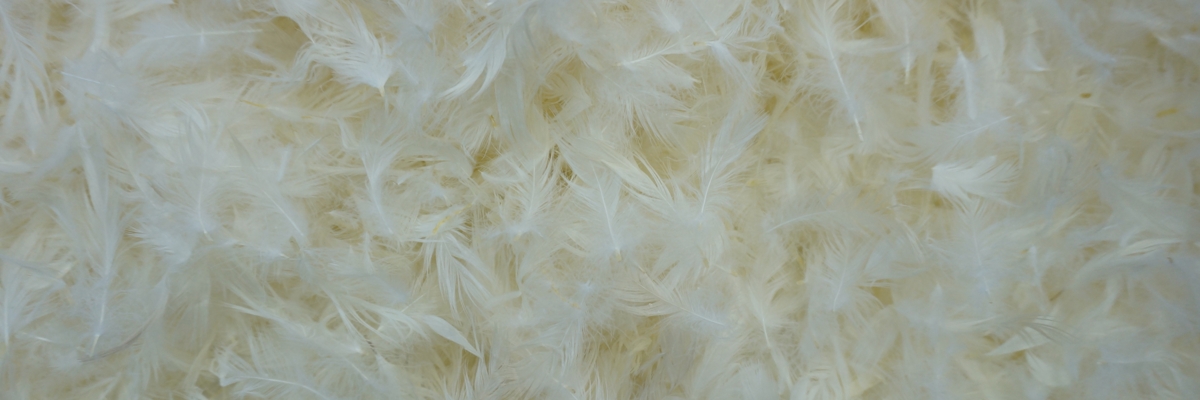
0 items added to basket
Image currently unavailable
Price on enquiry
Subtotal (0 items)
£0.00
Types of Sofa Fillings

Sofa Fillings: The Basics
Sofa fillings are varied in type, material and outcome so, depending on what you want from your sofa, there are many options to choose from. Three of the most important things to known about sofa fillings are:
- Their ability to provide the adequate support
- Their loft (or filling power determined by the number of cubic inches one ounce fills)
- The combination options e.g. a blend of feather and down, feather, down and fibre or down-wrapped foam cushions
Stuffing
Before foam filling existed, stuffing was used ubiquitously in traditional sofa upholstery and sometimes it is, still, used today. It is often used in conjunction with other fillings but is independently prized for its natural-feel comfort and ability to fill small and difficult spaces.
Coir
Coir is a material processed from the natural husk of coconuts and bristle coir (the longer fibres) was a popular stuffing material for upholstery before the advent of synthetic and foam fillings. It was used as an alternative to animal hair stuffing and is sustainable, economical, has a low decomposition rate and is stronger (but not as flexible) as cotton. Coir isn't used much these days but it may become more popular again for those interested in eco-friendly and healthy alternatives to synthetic fillings.

Down Filling
Composed of tiny tangled filaments, down is the soft, insulating under-plumage of birds. It is known for its loft, warmth and softness. Generally, pure goose down is the finest used for luxury sofas because of its large clusters and cling (the tendency of down filaments to stick together) and, as such, commands a high price point. However, Eiderdown—the rare and expensive down from the Eider duck—is renowned for being very dense and is the most desirable of all downs. Down cushions need regular plumping.

Feather Filling
Feathers come from the hardier overcoat of birds. They have a central quill with filaments on either side and come in varying lengths, textures and types which determines their cost and quality. Flight feathers—the outermost wing feathers—are straight and inflexible and not ideal for upholstery. Body feathers are light and curled and provide excellent loft. White feathers wrapped in a tightly woven fabric casing represents the ideal standard for luxury upholstery fillings. Feather cushions need regular plumping.

Horsehair
A rarely used, traditional sofa filling, horsehair is collected from trimmed horse tails and manes. The hair is processed, turning the straight, glossy strands into a crimped finished product many times its original volume. Horsehair provides a lot of springiness and texture to upholstery pieces. Whilst most workshops have replaced horsehair stuffing with modern fillings, some restoration work might require it. Still, a horsehair and cotton or wool blend would be preferable for the desirable properties of those fibres.

Wadding & Padding
In chair and sofa upholstery, wadding (or batting) is used in conjunction with foam to soften cushion edges, produce the rounded top—known as the crown—of a cushion, to prevent friction between the core foam and upholstery fabric and to compensate for any slackness in fabric as it stretches over time. Here are the wadding options you should know:
Cotton Wadding
Hollow-Fill Fibre
Polyester Wadding
Wool Wadding
Foams
Most upholstery foams are made of polyurethane (a combination of polyol and diisocyanate) and the term “polyurethane foam” is a generically used term which covers everything from memory foam to high density foam. Overall, foam is the firmest of all upholstery fillings although it does come in varying materials and densities.
In many countries, including the UK, these densities are distinguished by their corresponding colours—pink, white and blue. In the States, upholstery foams are given an Indentation Force Deflection (IFD) rating which denotes their firmness.
Lower IFDs are softer; higher IFDs are firmer. In high-end upholstery, multiple foams are used in a single sofa so that individual areas are given completely tailored support. UK foam manufacturers are obligated to comply with the national standards and all foams should be of a high quality.
Sofa foams made overseas don’t always have such strict regulations and, therefore, are usually of inferior quality. Inferior foams are not comfortable, do not provide adequate support and will deteriorate very quickly. Foams from overseas must be CMHR combustion modified and high resilient to comply with UK legislation.
High-Density Foam
Medium-Density Foam
Low-Density Foam
High-Resiliency Foam
Latex Foam
Memory Foam
What Is Sofa Sagging & How To Prevent It?
As long as a sofa has a well-made, solid wood frame, sofa sagging should be the only way it will deteriorate over time. Sofa sagging—also known as bottoming out—happens when the sofa’s materials stretch out over time or use (in the case of webbing), start to deteriorate (in the case of foam) or compress (in the case of wool or cotton wadding).
A sagging sofa may happen eventually—however high-quality a sofa’s foam, springs and webbing are—but quality is the best way of preventing premature sagging. Always buy sofas from quality retailers who use suitable, high-quality materials appropriate for its intended use. Low-quality foams will lose shape and quickly begin to break down or turn so brittle that they can be turned into powder.
Bad initial sofa construction may also result in sofa sagging. If manufacturers don’t properly affix upholstery fillings or separate layers with scrim, rubbing can result in materials breaking down, particularly foams.
Fire Retardancy
In many countries, upholstery materials—both fillings and fabric—are required to conform to strict fire codes, usually referred to as Fire Retardancy or FR. This is because soft furnishings are, by nature, quite flammable and burn even quicker than wooden furniture pieces. In the UK, all upholstery materials should comply with the 1988 safety regulations which requires that all are cigarette-resistant, filling materials meet ignition requirements and covers are match-resistant.
For fabrics which are not manufactured with suitable FR standards, specific treatments can be applied or steps taken to ensure that they comply including interlining, back coating and chemical treatments.
Here at LuxDeco, we are committed to helping customers around the world discover the sofa of their dreams. If you would like help designing or choosing your luxury sofa, contact our team at[email protected]or +44 (0)20 3322 8665.
Discover More
Continue on your sofa journey and learn more about the craftsmanship and care that goes into the production of our luxury sofas.
